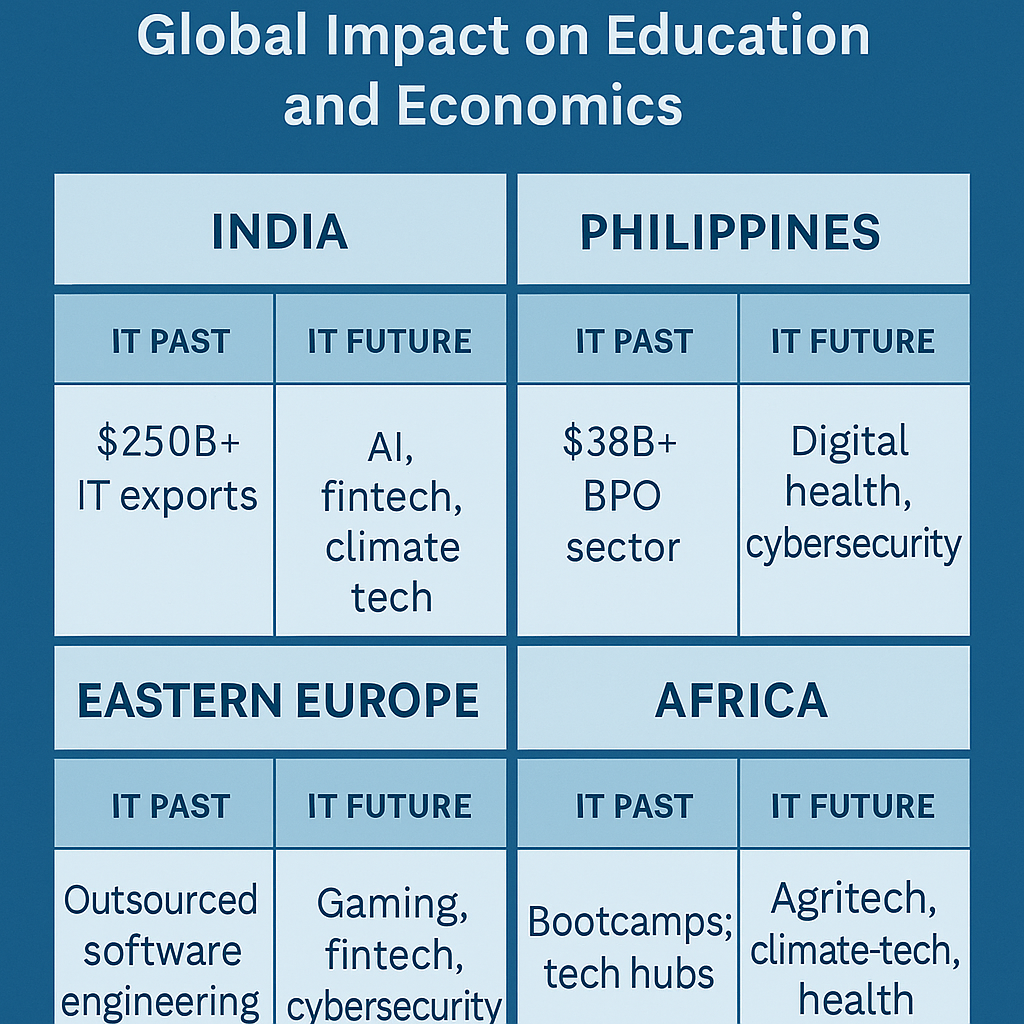
The End of the “Learn to Code” Promise—and What It Means for India and Global Higher Education
Share
From promise to oversupply
“Learn to code” was the mantra of the 2000s and 2010s. For India, that advice helped transform the country into the IT outsourcing hub of the world, spawning giants like Infosys, Wipro, and TCS. Coding was not just a skill; it was a national growth strategy.
But as the New York Times podcast (Big Tech Told Kids to Code. The Jobs Didn’t Follow) shows, the global equation has changed. Today, the oversupply of coders, coupled with AI-driven automation, low-code/no-code platforms, and corporate cost-cutting, means coding alone is no longer a guaranteed ticket to upward mobility.
And this is where the Indian story becomes global.
Why India is especially vulnerable
-
Scale of IT dependence
India’s economy has leaned on IT exports for decades, worth over $250 billion annually. Millions of graduates enter software and IT service jobs each year. If demand for basic coding roles flattens, India faces a structural employment challenge. -
Demographic pressure
With one of the world’s youngest workforces, India produces 1.5 million engineering graduates annually. A narrowing funnel of coding-based roles risks creating mass underemployment. -
Student mobility shifts
Coding’s decline will ripple into study abroad markets. Indian students—who now make up the largest cohort of international students in the U.S. (over 270,000 in 2024) and growing shares in the UK, Canada, and Australia—may rethink where they study and what they study.
Impact on study choices: undergrad and master’s
For the last 20 years, Indian students have largely pursued computer science, IT, and engineering abroad, safe bets that led back into global IT pipelines. But now:
- Undergraduate level: Families may hesitate to send students for expensive CS degrees if those degrees only lead to commoditised roles. Expect a tilt toward AI, data analytics, cybersecurity, fintech, sustainability, and biomedical informatics.
- Master’s level: Professional master’s programs in CS will remain popular, but the demand will shift toward specialised “tech + X” hybrids: Tech + Healthcare, Tech + Climate, Tech + Policy.
- Mobility destinations: Countries offering clearer post-study work rights (Canada, Germany, Australia) may capture more Indian demand if the U.S. visa pipeline remains uncertain—especially if U.S. tech hiring cools.
The challenge for Western universities
This shift poses an existential design challenge for universities that have, for years, relied on Indian (and Chinese) enrollment in computer science and IT programs:
Curriculum redesign
-
- Move beyond “pure coding” to applied, domain-integrated programs.
- Examples: “AI in Healthcare,” “Sustainable Energy Data Systems,” “Fintech & Blockchain Analytics,” “Cybersecurity in Critical Infrastructure.”
Interdisciplinary recruitment
-
- CS departments can no longer exist in silos. Joint degrees with business, law, public policy, and life sciences will become essential.
ROI transparency
-
- Students will demand proof of employability: job placement rates, salary data, and clear mapping of programs to growth occupations.
Visa-linked design
-
- To remain attractive, programs must align with shortage lists (e.g., Canada’s Global Talent Stream, Germany’s bottleneck occupations, UK Skilled Worker eligible roles).
The bigger picture: India’s next IT revolution won’t look like the last
India’s IT boom was built on outsourced coding at scale. The next phase will depend on:
- Specialisation: AI/ML, green tech, quantum computing, bioinformatics.
- Domain integration: healthcare tech, agritech, climate resilience, logistics.
- Entrepreneurship: Startup India 2.0 may focus more on solving domestic challenges than on pure outsourcing.
For students, that means choosing degrees not by the promise of “learn to code” but by how coding intersects with the grand challenges of the 21st century.
Rethinking the promise
The “learn to code” mantra is not dead—but it is incomplete. For India, it risks becoming a trap if universities and students continue to flood into generic coding programs while the market shifts elsewhere.
For Western universities, the challenge is just as urgent. Those that can pivot to applied, interdisciplinary, ROI-proof programs will continue to attract India’s best students. Those that cling to outdated “coding factory” curricula risk irrelevance.
In the next decade, the winners will be students and institutions that understand coding is no longer the destination—it’s the starting point for solving bigger problems.










